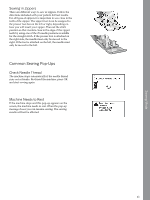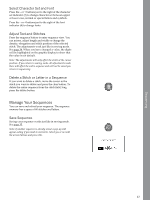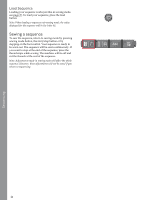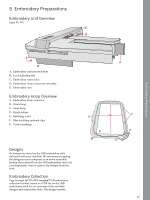Pfaff creative 1.5 Manual - Page 40
Blindhem Stitch, Elastic Blindhem Stitch
 |
View all Pfaff creative 1.5 manuals
Add to My Manuals
Save this manual to your list of manuals |
Page 40 highlights
Sewing Mode 2. Attach the optional Open Toe Free-Motion foot. Disengage the IDT™ system and lower the feed dogs. 3. Begin by pin basting your quilt through all layers with safety pins, starting from the center of your quilt and working out. Place a pin every 6-8 inches (15-20 cm). Note: Practice stippling on scraps of the fabric and batting from your quilt. It is important to move your hands at the same speed as the needle to prevent stitches that are too long or too short. Maintaining a consistent speed while free-motion sewing will also help keep stitches even. 4. Begin near the center of your quilt. Take one stitch and pull the bobbin thread to the top of the quilt. Take a few stitches right next to one another to lock the threads. 5. Plan a path for your stitching, then begin stitching your desired stipple pattern, moving the quilt as you go. The stitching should not cross over itself and should travel in a meandering motion. Blindhem Stitch The blindhem stitch is used to make invisible hems on skirts, trousers and home décor projects. Use foot number 3 with the IDT™ system. 1. Finish the edge of the hem. 2. Fold and press the hem allowance to the wrong side. 3. Fold the hem back on itself so approximately 3/8" (1 cm) of the finished edge extends beyond the fold. The wrong side of your project should now be facing up. 4. Place the fabric under the presser foot so that the fold runs along edge guide (A). 5. When the needle swings into the fold it should catch a small amount of fabric. If the stitches are visible on the right side, adjust edge guide A by turning adjusting screw (B) until the stitch that catches the hem just barely shows. Elastic Blindhem Stitch The elastic blindhem stitch is especially suitable for stretchy fabrics, because the zigzag in the stitch lets the stitch stretch. The hem is finished and sewn at the same time. There is no need to finish the raw edge first on most knits. To the left: blindhem stitch number 15. To the right: blindhem stitch number 16. 40















